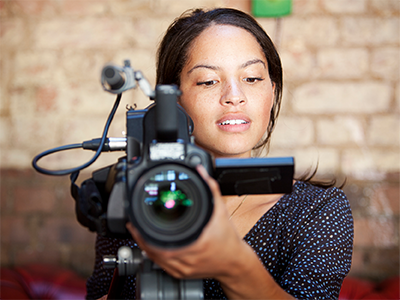The Duty of Legal Videography in Modern Legal Process
Wiki Article
Delving Into the Devices of Lawful Videography: Unveiling Its Procedure in Shielding Genuine Visual Testament for Judicial Proceedings
In the world of judicial process, the duty of lawful videography stands as a foundation in maintaining and offering visual proof. As innovation proceeds to advance, the mechanisms behind lawful videography have actually become increasingly elaborate, offering a crucial layer of authenticity to testimonies recorded on video.Historical Evolution of Legal Videography
Analyzing the historic progression of legal videography exposes a significant makeover in the capturing and discussion of aesthetic evidence within the legal landscape. In the past, lawful process heavily relied upon created photographs and transcripts to record events and supply proof. Nonetheless, with the introduction of video clip technology, the lawful sector experienced a standard change in how visual statement was captured and offered.The advancement of legal videography can be traced back to the late 20th century when advancements in video clip recording tools made it extra easily accessible for use in courts. This technological innovation not only improved the accuracy and reliability of visual evidence yet additionally reinvented the method instances were offered to courts and courts (Legal Videography). Lawyers started to identify the convincing power of video recordings in communicating emotions, subtleties, and non-verbal hints that created photographs or records alone could not catch efficiently

Technology Improvements in Video Clip Documentation
What crucial technical innovations have changed video documentation in the lawful field? The lawful area has actually seen substantial improvements in video paperwork innovation that have actually improved the authenticity and integrity of aesthetic proof in judicial procedures.Moreover, advancements in video clip file encryption and watermarking innovations have strengthened the security and tamper-proof nature of video clip proof, safeguarding it against unapproved modifications or tampering. Additionally, the arrival of cloud storage space options and remote accessibility capacities has streamlined the storage, access, and sharing of video clip evidence, helping with seamless collaboration amongst lawyers and making certain efficient accessibility to critical aesthetic statements when required. These technical innovations in video documentation have definitely transformed the lawful field, boosting the accuracy, credibility, and admissibility of aesthetic proof in judicial procedures.
Function of Legal Videographers in Court Room Settings
The development of video clip documentation technology in the lawful field has actually necessitated an important function for lawful videographers in courtroom setups, making certain the honesty and integrity of aesthetic testimonies provided throughout judicial process. Legal videographers play a fundamental role in recording and protecting accurate aesthetic evidence that can be crucial in court instances. Their responsibility includes establishing up equipment, taping procedures, and generating premium video clips that precisely reflect the occasions in the court.
Furthermore, legal videographers commonly work very closely with legal teams to make certain that the video evidence straightens with the instance's demands and can be efficiently offered in court to sustain the lawful arguments being made. Generally, the duty of lawful videographers in court settings is essential in maintaining the principles of justice and making sure the openness of lawful proceedings. Legal Videography.

Ensuring Admissibility and Stability of Video Proof
To maintain the reliability of visual proof offered in legal procedures, making sure the admissibility and honesty of video clip evidence is a critical he said duty for legal videographers. Admissibility describes the approval of evidence by the court, and for video clip evidence to be acceptable, it should fulfill certain requirements. Lawful videographers play a crucial duty in guaranteeing that the video clips they capture adhere to the rules of evidence, such as reliability, importance, and credibility.Honesty of video clip proof includes keeping the creativity and precision of the video footage from the time it is tape-recorded till it exists in court. This consists of firmly saving the video clip data, documenting the chain of guardianship, and avoiding any type of meddling or alterations. Lawful videographers need to follow rigorous methods to guarantee the integrity of the video proof and prevent any type of challenges to its credibility.
Future Trends in Legal Videography
Given the increasing dependence on innovation in legal procedures, lawful videographers are poised to accept cutting-edge developments shaping the future of visual testament capture and discussion. One of the popular patterns coming up is the assimilation of online truth (VR) and augmented fact (AR) innovations right into legal videography. These innovations have the prospective to revolutionize how aesthetic evidence exists in courtrooms, enabling courts and courts to immerse themselves in the scene of the criminal activity or event.In addition, using expert system (AI) formulas for video clip analysis is anticipated to improve the process of assessing and evaluating big amounts of video clip footage. AI can assist in determining key minutes, anomalies, and patterns within video clips, improving the performance of lawful investigations.

Conclusion
In final thought, legal videography has played a critical duty in giving authentic visual evidence for judicial process. Through technological improvements and the expertise of legal videographers, the integrity and admissibility of video proof are guaranteed in court room settings. As lawful videography proceeds to progress, it will be necessary to promote requirements that preserve the precision and reliability of aesthetic testimony for the future of legal proceedings.Examining the historical development of lawful videography discloses a considerable transformation in the capturing and discussion of aesthetic proof within the lawful landscape.The development of video clip documentation technology in the lawful area has actually necessitated a crucial role for lawful videographers in court settings, ensuring the stability and dependability of aesthetic testimonies offered during judicial process. In addition, legal videographers commonly function carefully with lawful teams to make sure get more that the video proof straightens with the case's demands and can be properly presented in court to support the legal debates being made.To maintain the reputation of visual proof offered in legal proceedings, making certain the admissibility and why not try here stability of video clip proof is an essential duty for legal videographers. As lawful videography continues to evolve, it will be crucial to copyright standards that keep the precision and reliability of aesthetic testament for the future of lawful procedures.
Report this wiki page